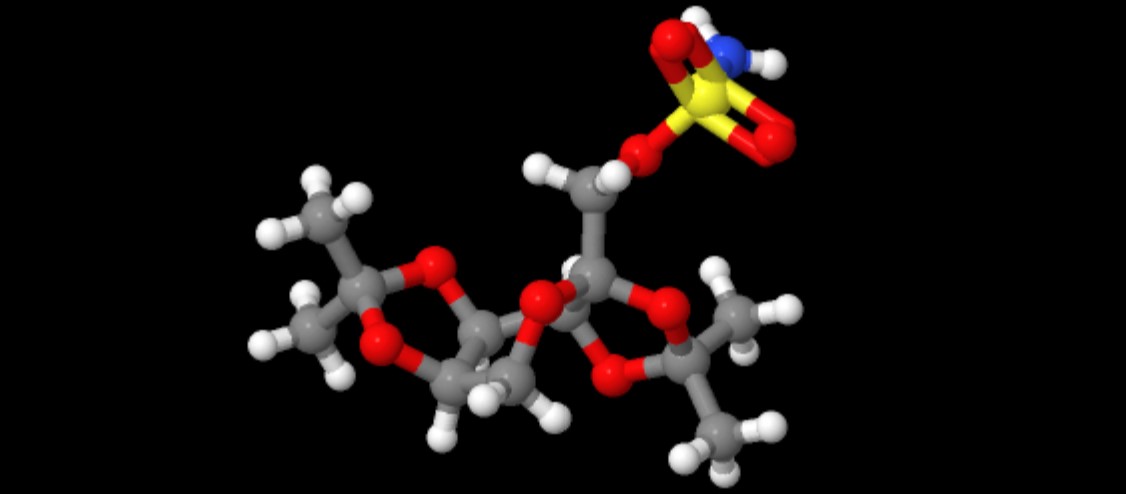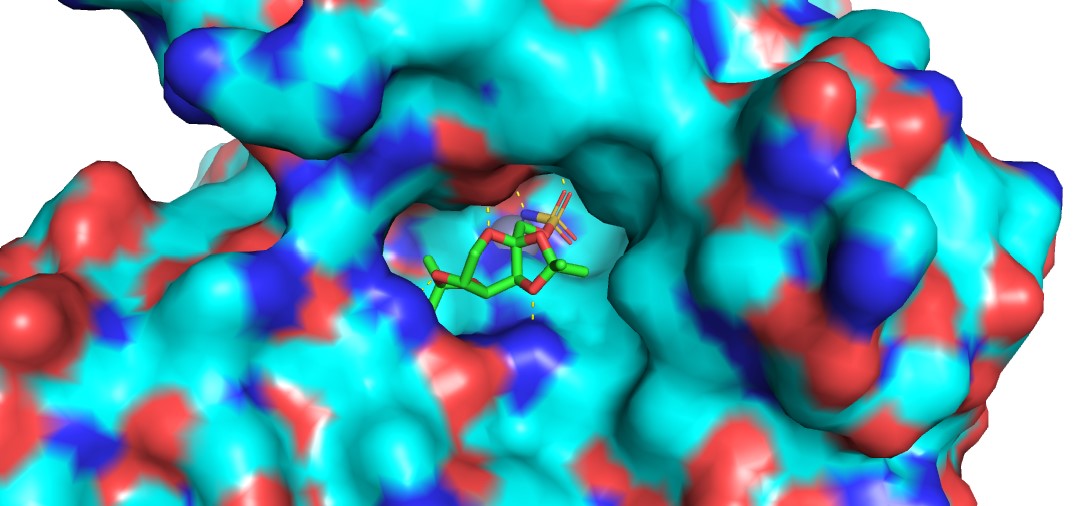Background
Topiramate (TPM) is an anticonvulsive and antimigraine drug that helps prevent or reduce the frequency of epileptic seizures and that is used as a prophylaxis of migraine. (Shank and Maryanoff, 2008)
TPM not only inhibits kainate subtypes and α-amino-3-hydroxy-5-methylisoxazole-4-propionic acid (AMPA) subtypes of glutamate activated ionotrophic receptors, the modulatory effects on GABAA receptors and voltage-gated Ca2+ and Na+ channels (Gibbs et al., 2000), but also inhibits carbonic anhydrase enzymes (demonstrated in electrophysiologic and biochemical studies). see drugs.com
OP question
It is an intriguing possible correlation that “Topiramate supplants PLP in the enzyme glutamate decarboxylase [GAD]”, notably based on structural similarity of the alkyl-sulfamate to the alkyl-phosphate as well as the linked rings.
However, the literature does not seem to align with this premise:
- Shank and Maryanoff et al.(2008) noted that “[Topiramate’s] sulfamate moiety is essential, but not sufficient, for its pharmacodynamic properties.”
- Whereas PLP is a substitute pyridine (planar) derivative, TPM is a sulfamate, substituted derivative of β-D-fructopyranose (Maryanoff et al., 1987) where its substituted ring is in the boat conformation and its ring is puckered. See the crystal structure as entry SEQKAA02 at CCDC

- TPM does not seem to inhibit glutamate decarboxylase. “Single-dose and repeated treatments with TPM were without effect on the activities of GABA-T and GAD (Fig. 2) in mouse brain at 4 h after administration.” (Sills et al., 2000)
- GAD inhibition and Topiramate treatment have opposite effects. “Clinical evidence shows that lowered GAD activity is associated with several forms of epilepsy which are often treatment resistant.” (Zhang et al. 2017; Lloyd et al. 1986) Furthermore, Zhang et al. synthesized an ethyl ketopentenoate (EKP), a lipid-permeable GAD-inhibitor, and used it to induce refractory seizures in zebrafish larvae. (yes, that’s mean.. but informative here.)
Molecular basis of carbonic anhydrase inhibition
Topiramate is a carbonic anhydrase inhibitor (multiple classes), a Zn-dependent metalloenzyme. Below is how Topiramate (green) binds to human carbonic anhydrase II. The zinc ion is shown as a silver sphere. RCSB entry 3HKU.pdb DOI: 10.2210/pdb3HKU/pdb and Lopez et al. (2009):

Conclusion
Given the above, I wouldn’t think the apparent structural similarity of Topiramate to PLP is relevant to epilepsy and/or migraine treatment.
References
Lloyd, KG, Bossi, L, Morselli, PL, Munari, C, Rougier, M and Loiseau, H (1986) “Alterations of GABA-mediated synaptic transmission in human epilepsy” Adv. Neurol. 44:1033–1044. source
Lopez, M, Paul, B, Hofmann, A, Morizzi, J, Wu, QC, Charman, SA, Innocenti, A, Vullo, D, Supuran, CT and Poulsen, SA (2009) “S-Glycosyl Primary Sulfonamides−A New Structural Class for Selective Inhibition of Cancer-Associated Carbonic Anhydrases” J. Med. Chem. 52:6421-6432. DOI: 10.1021/jm900914e
Maryanoff BE, Nortey SO, Gardocki JF, Shank RP, Dodgson SP (1987) “Anticonvulsant O-alkyl sulfamates. 2,3:4,5-Bis-O-(1-methylethylidene)-β-D-fructopyranose sulfamate and related compounds” J. Med. Chem. 30:880–887. DOI: 10.1021/jm00388a023
Shank, RP and Maryanoff, BE (2008) “Molecular pharmacodynamics, clinical therapeutics, and pharmacokinetics of topiramate” CNS Neurosci. Ther. 14:120-142. DOI: 10.1111/j.1527-3458.2008.00041.x
Sills, GJ, Leach, JP, Kilpatrick, WS, Fraser, CM and Brodie, MJ (2000) “Concentration-Effect Studies with Topiramate on Selected Enzymes and Intermediates of the GABA Shunt” Epilepsia 41 (Suppl. 1):S30-S34. DOI: 10.1111/j.1528-1157.2000.tb02168.x




